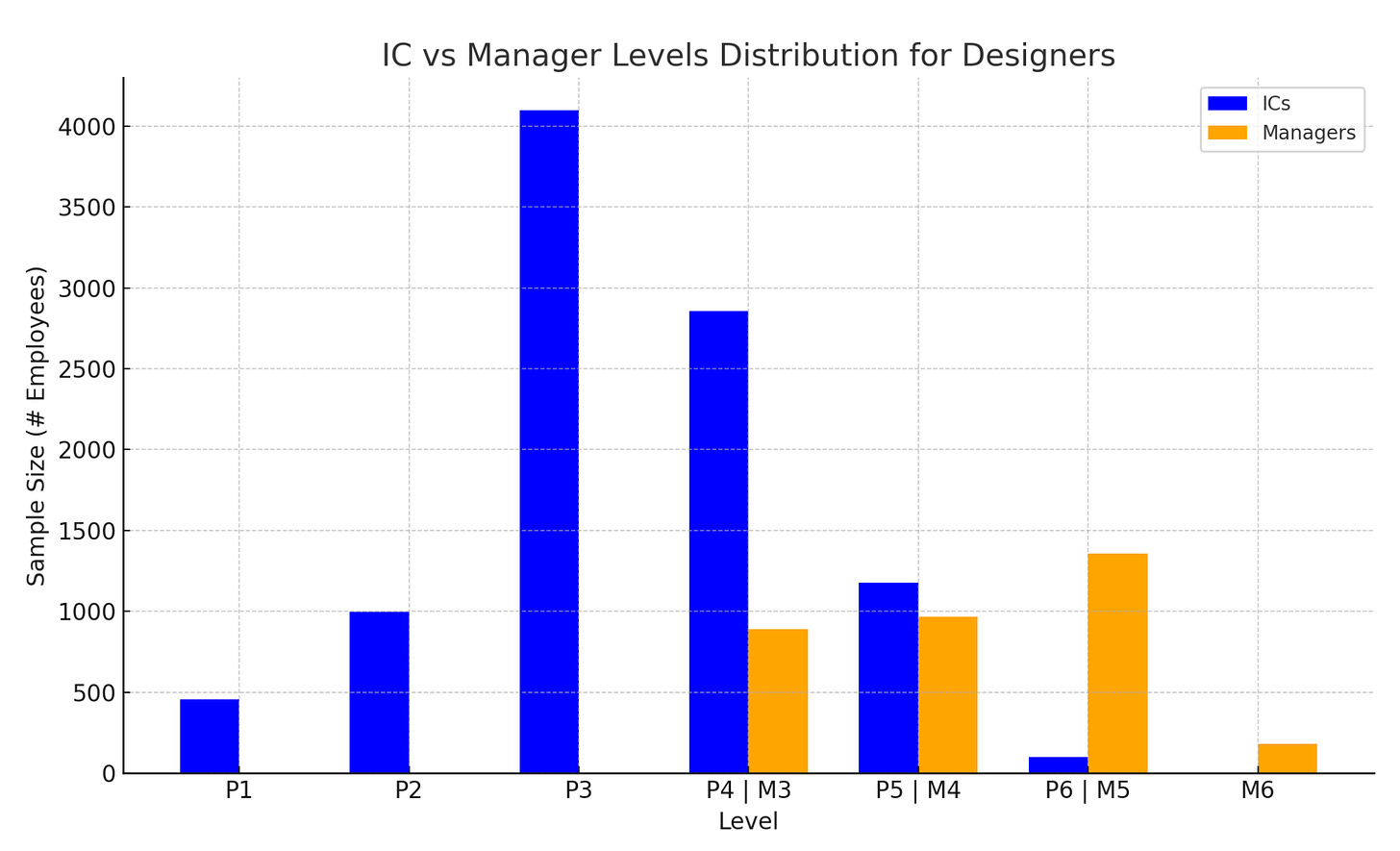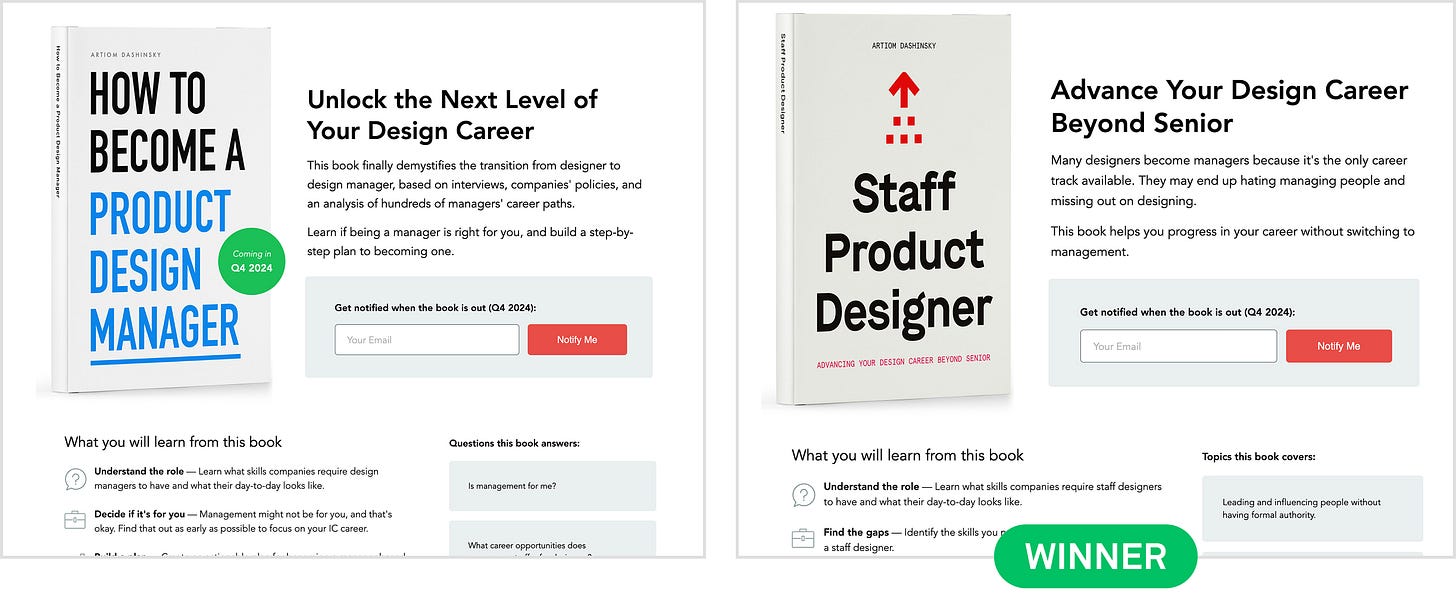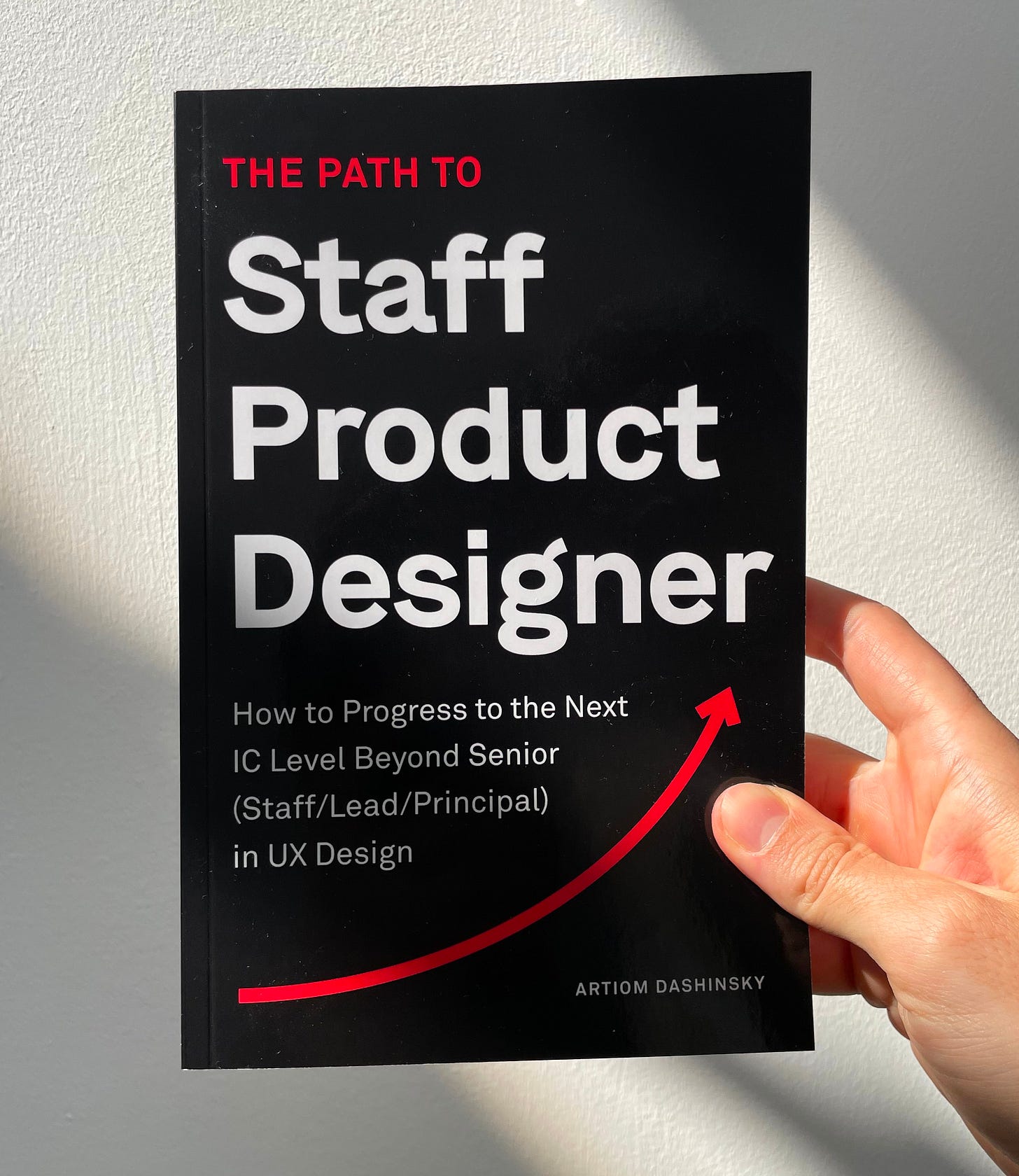Designers can choose two main career paths: individual contributor or manager.
Each path has its reasons. Here is one way to look at which option has more opportunities using rough estimations.
To answer the question whether you should become a Staff/Lead or Manager, let’s look at:
Demand—how many open jobs for ICs and Managers exist?
Supply—how many Staff/Leads and Managers are out there competing for these jobs?
Preference—what career track do designers on senior and below levels prefer?
The data
Preference
Before I start writing my books, I validate a few concepts.
For my last book, I knew I wanted to write a guide for progressing beyond senior. But I wasn’t sure if I should focus on the IC or management track.
I ran a few surveys among junior/mid/senior-level designers to check which track they prefer.
Surprisingly, I got almost identical results across two different sources:
2x more designers want to stay ICs and NOT manage people (2.3:1 ratio).
Later, I ran an A/B test of two landing pages for two concepts of books, and the staff track won over the management as well:
Supply
Let’s take a look at how many designers are on LinkedIn with ICs/manager titles:
There are 1.7x more ICs than managers.
We do not know how many of them are employed, so it represents the overall pool of talent in each category per job.
Demand
Design job postings are split on LinkedIn in the US this way:
There are 3x more design job openings for ICs than managers.
How IC/manager data is collected on LinkedIn:
I checked how many people on LinkedIn have the following titles in the US:
Staff Product Designer
Lead Product Designer
Product Design Manager
Lead can be a management position at some companies while it’s an IC role at others. To resolve that, I sampled 30 US companies—80% of leads were ICs and 20% were managers. I used that split to divide leads between these two categories.
Insights
Now we can cross-check between the supply, demand and designers’ preferences to see which track could potentially have less competition. Here are my conclusions:
1. Short-term: better to stay an IC
The IC path has significantly less competition—13 ICs on job opening vs. 23 managers. So if you only care about being on the path with less competition, the IC path is “safer”.
The fact that more than 2x junior/mid/senior designers actively say they prefer the IC is in balance with the overall demand and supply in the market. As a result, it doesn’t significantly change the competition.
Hence, if you ignore all personal and professional growth factors—and look only at the numbers—the data suggests it is easier to find and keep opportunities as an IC. Purely on data, management is a tougher market to penetrate or stay in.
2. Long-term: management may have more opportunities
However, we’ve been only looking at the first position after senior (staff/lead vs. manager). If we look at Sr. Staff/Principal vs. Director/VP positions, the situation may look different.
The later you are in your career, the more management positions there are than ICs at the same level. For example, there are 13x more directors than principals on the same level.
Here is how levels are distributed among a dataset of 13,074 employed designers (thanks, Pave for the data):

You can see that the trend reverses—after tracks split, the more senior you become, the more managers and fewer ICs companies employ.
The good news: many companies let staff designers move into management, and managers can return to IC roles. You don’t have to choose forever.
This analysis looks at the market today. In the future, additional factors that are hard to predict right now will affect the market. For example, some claim that AI will reduce the need for managers.
If you’re looking to progress beyond the senior position, check out my last book.










This is super cool Artiom and thanks for all of your research! Just out of curiosity, which one do you think is overall the best given the pros and cons of both? IC or manager?